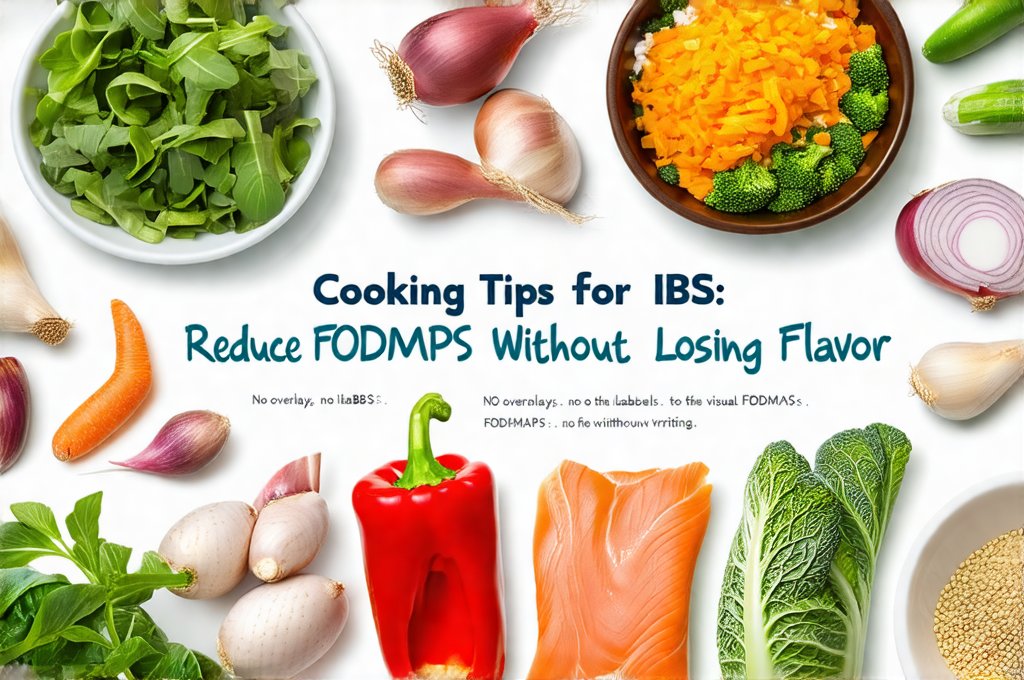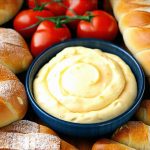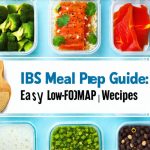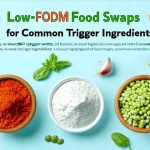Irritable Bowel Syndrome (IBS) can be incredibly challenging to navigate, especially when it comes to food. Many people with IBS experience significant discomfort after eating, leading to anxiety around mealtimes and a restrictive diet that impacts quality of life. The good news is that you can enjoy delicious, satisfying meals while managing your symptoms. It’s not about eliminating entire food groups, but rather understanding how certain foods interact with your digestive system and making informed choices. This often involves focusing on low-FODMAP eating, a dietary approach developed to minimize triggers for IBS sufferers. However, low-FODMAP doesn’t have to mean bland or boring!
The key lies in learning to adapt recipes and explore new ingredients that deliver flavor without exacerbating your symptoms. Many individuals with IBS find relief by reducing their intake of FODMAPs – Fermentable Oligosaccharides, Disaccharides, Monosaccharides, And Polyols – which are types of carbohydrates poorly absorbed by the small intestine. This leads to fermentation in the large intestine, resulting in gas, bloating, and discomfort. While a complete elimination diet is often used for initial diagnosis with guidance from a healthcare professional, long-term management focuses on reintroduction phases to identify individual sensitivities and build a sustainable, enjoyable eating pattern. Ultimately, cooking for IBS is about empowering yourself with knowledge and reclaiming control over your health – and enjoyment of food! If you’re finding it hard to navigate dietary changes, consider exploring tips for transitioning to a gut-friendly diet without discomfort.
Understanding the Low-FODMAP Diet
The low-FODMAP diet isn’t necessarily a permanent lifestyle change, but rather a tool to help identify trigger foods. It’s best implemented under the guidance of a registered dietitian specializing in IBS, as incorrect application can lead to unnecessary restriction and nutrient deficiencies. The diet is generally followed in three phases: elimination, reintroduction, and personalization. – Elimination: This phase involves drastically reducing all high-FODMAP foods for 2-6 weeks to allow your gut to calm down. – Reintroduction: Foods are reintroduced one at a time, carefully monitoring for symptoms. This helps pinpoint which FODMAPs specifically trigger your IBS. – Personalization: Based on reintroduction results, you create a long-term dietary plan that allows for the greatest variety of foods while minimizing discomfort.
It’s crucial to remember that FODMAPs are present in many everyday foods, so understanding where they hide is essential. For example, onions and garlic are high in fructans, apples and pears contain sorbitol, and dairy products often contain lactose. Fortunately, there are plenty of low-FODMAP alternatives available! Shallots can substitute for onion in some recipes, ripe bananas are lower in fructose than unripe ones, and lactose-free dairy options or plant-based milks can replace traditional dairy. Focusing on fresh, whole foods is generally a good starting point, as processed foods often contain hidden FODMAPs and other additives that can contribute to symptoms. If you’re cooking for others with sensitivities, explore tips for cooking when you have food sensitivities yourself.
Flavor Without the Fuss: Low-FODMAP Cooking Strategies
One of the biggest concerns people have when transitioning to a low-FODMAP diet is losing flavor. However, with a little creativity and resourcefulness, you can create incredibly tasty meals without relying on high-FODMAP ingredients like garlic and onion. Infused oils are your friend! Infuse olive oil with herbs like rosemary, thyme, or chili flakes to add depth of flavor to dishes. Similarly, using spices generously – turmeric, ginger, cumin, coriander – can elevate the taste profile without triggering symptoms. Lemon juice and zest are also fantastic for adding brightness and acidity.
Don’t underestimate the power of umami. Ingredients like soy sauce (check it’s gluten-free if needed), mushrooms (some varieties are low-FODMAP in moderate amounts), and sun-dried tomatoes can provide a savory depth that compensates for the absence of garlic and onion. When cooking, focus on techniques that enhance flavor naturally. Roasting vegetables brings out their sweetness, while slow cooking allows flavors to meld and develop. Finally, remember that texture plays an important role in enjoyment; think about adding crunchy elements like toasted nuts (in moderation) or seeds to your meals. If you’re struggling with morning discomfort, look into tips for managing morning nausea without skipping breakfast.
Building a Low-FODMAP Pantry
A well-stocked pantry is essential for successful low-FODMAP cooking. Here are some staples to keep on hand:
- Grains & Starches: Rice (white, brown, basmati), quinoa, oats (rolled or steel-cut), potatoes, sweet potatoes.
- Proteins: Chicken, fish, beef, pork, tofu, eggs.
- Fruits: Bananas (ripe), blueberries, strawberries, oranges, grapes, cantaloupe.
- Vegetables: Carrots, spinach, kale, zucchini, bell peppers, tomatoes, cucumber.
- Dairy & Alternatives: Lactose-free milk, almond milk, coconut yogurt, hard cheeses in moderation.
- Oils & Seasonings: Olive oil, infused oils, herbs (fresh or dried), spices, soy sauce (gluten-free).
It’s important to always check labels, as ingredients can vary between brands and products. Look for hidden sources of FODMAPs like high-fructose corn syrup, honey, or inulin. Building a pantry gradually will prevent overwhelm and ensure you have the basics covered for creating delicious meals. If you experience discomfort while eating, consider tips for enjoying your favorite foods without gas.
Herbs & Spices: Your Flavor Allies
Herbs and spices are essential to low-FODMAP cooking because they provide flavor complexity without relying on onion or garlic. Experimenting with different combinations can unlock new dimensions in your dishes! – Fresh herbs like basil, parsley, cilantro, mint, and chives add brightness and freshness. Add them towards the end of cooking to preserve their delicate flavors. – Dried herbs are convenient for everyday use. Use about one-third the amount compared to fresh herbs. – Spices such as turmeric, ginger, cumin, coriander, paprika, chili powder, and cinnamon offer a wide range of flavor profiles.
Don’t be afraid to get creative! Consider making your own spice blends tailored to your preferences. For example, a blend of smoked paprika, cumin, and oregano can add a smoky depth to grilled chicken or fish. Infusing oils with herbs is another great way to build flavor. Combine olive oil with rosemary sprigs, chili flakes, or thyme for a versatile seasoning that can be used on vegetables, meats, or salads.
Mastering Flavorful Sauces & Dressings
Many store-bought sauces and dressings contain high-FODMAP ingredients like onion, garlic, or honey. Creating your own allows you to control the ingredients and ensure they’re IBS-friendly. Vinegar-based dressings are easy to make: combine olive oil, vinegar (balsamic, apple cider, red wine), Dijon mustard, and herbs. – Tomato-based sauces can be made with crushed tomatoes, herbs, spices, and a touch of maple syrup for sweetness. Avoid adding onion or garlic. – Nut butter-based sauces are great for Asian-inspired dishes: combine peanut butter (or almond butter), soy sauce (gluten-free), rice vinegar, and ginger.
When making sauces, consider using infused oils to add depth of flavor. A rosemary-infused olive oil can elevate a simple tomato sauce, while a chili-infused oil adds a kick to a nut butter-based sauce. Remember that even small changes can make a big difference in the overall taste and enjoyment of your meals. If you’re prone to reflux, explore tips for reducing reflux without giving up favorite foods.


















